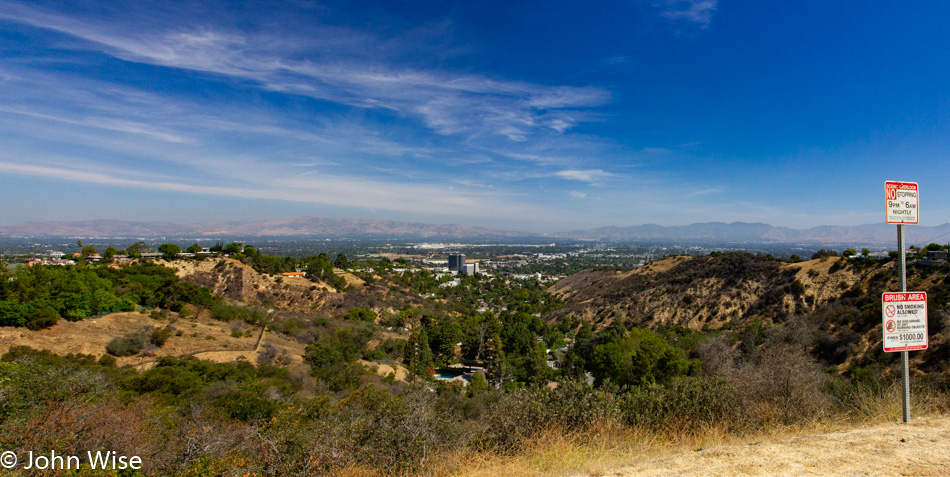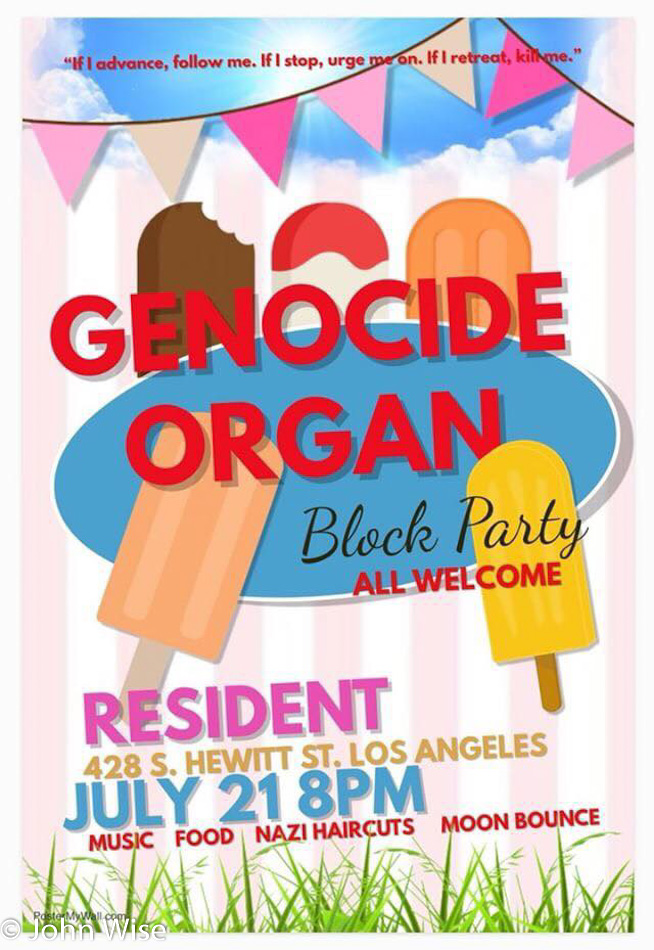
Starting on a fresh foot, having something new at Bon Juk restaurant in Koreatown. It’s hard to find a restaurant serving what would be considered Asian breakfast, but here it is, a porridge with abalone, and out of the photo is a sweet pumpkin porridge. So we covered sweet and savory in one meal. The other traditional sides that come with it were kimchee (of course), diced squid and radish, roasted pickled beef, and tangy cold radish water.

Payphones are certainly on their way out, but their long shadows remain. Sometimes, all you find is the sunburned spot and concrete pad where it once was bolted to the ground. at other times, only the phone has been removed, and then, on rare occasions, the phone remains, albeit in some state of disrepair. As these relics become anomalies, I find them more and more intriguing as my memory is able to find images of people from a previous century talking on them, stopping to look for something in the phone book that accompanied them (hoping the page we needed was still in it), and people asking for change so they could make a phone call. In some way, I guess they are like public installations of the once-ubiquitous typewriter: essential at one time, now mostly replaced.

On Wilshire Boulevard, we admire how beautiful everything is and how it’s amplified by the incredibly perfect weather. Angelenos tell us that within the week, it’s supposed to creep up into competition with Phoenix for being too damn hot, as it’s forecast to reach well into the 100’s.

We cut across Beverly Hills ending up on Mulholland Drive, where we found further proof of just how incredible our first full day in L.A. is turning out.

The Skirball Cultural Center is best described by its Wikipedia article that reads, “The Skirball is an educational institution devoted to sustaining Jewish heritage and American democratic ideals. It has been open to the public since 1996. The Center, named after philanthropist couple Jack H. Skirball and Audrey Skirball-Kenis, features a museum with regularly changing exhibitions, film events, music and theater performances, comedy, family, literary, and cultural programs. The campus includes a museum, a performing arts center, conference halls, classrooms, libraries, courtyards, gardens, and a café.”
The first exhibition we encounter is a retrospective of Leonard Bernstein, whose 100th birthday is quickly approaching. From old pianos he’d played during his lifetime to behind-the-scenes footage of Marlon Brando during the filming of “On The Waterfront,” which he scored in addition to “West Side Story.”

It was a pleasant surprise to see a couple of pieces from Kehinde Wiley, who is the artist who painted President Barack Obama’s official portrait.

What originally attracted us to visit the Skirball on this visit was the exhibit on Jim Henson and his career in puppetry. While most well-known for the Muppets and his frog puppet Kermit he was also an accomplished actor, director, and writer.

Somehow, I don’t think Jim Henson really ever considered that others would use his puppets for picking their noses; as a matter of fact, I don’t think many people who know Caroline would have thought her capable of such a thing either.

Before she saw the note pointing out that the image was from Frankfurt, Caroline noticed the famous bridge in the background known as the “Eiserne Steg” or, in English, “Iron Pathway.” It is, of course, located in the city where Caroline was born.

The one exhibit that appears to be a permanent display is the one that focuses on Jewish history in America. The Skirball is a brilliant modern space that, if we lived in L.A., would frequently draw our attention to the rotating exhibits and events that are hosted here.

The world’s best onion rings, according to the menu at Chicago for Ribs in Los Angeles south of Venice. We were supposed to visit Berlins for an authentic German Döner Kebab and also go over to John Fluevog’s shoe store around the corner, but somehow, I forgot that we were visiting Los Angeles in July when half the western United States has descended on the area to visit the beaches, Hollywood, and Disneyland for their summer holidays. I don’t think we looked for a parking spot for more than 7 seconds before we woke up to the reality that suggested we head elsewhere. As for the BBQ we shared, it was pretty good. Though I’m not sure we’d go again, it was well worth the stop.

Before we stopped for lunch and a much-needed coffee, we had passed the Ballona Freshwater Marsh, and seeing we had some extra time to spend away from the freak zone that is Venice Beach, why not walk around this outpost of nature along Lincoln Boulevard? Nearly everywhere we looked in Los Angeles, there were signs of the growing homeless population, and here, next to the marsh was no different, with a tent set up in the brush.

The marsh is a recent revitalization project to reclaim the land for its original purpose after decades of farming the area. The ecosystem is supporting a range of wildlife and the lush interior of the fenced habitat appears to be thriving.

Algae are doing just fine on the surface of the murky waters, where ducks and other waterfowl dip below the surface on the hunt for good eats. Using a stick to poke through the surface, it turned out that the water was quite shallow, and in disturbing the mud/goo, the earth released a stench that suggested we back away before being overwhelmed by the swamp gas that was threatening to incapacitate us. We obliged.

It’s surprising to us to be in L.A., find these small remnants of what the city once looked like, and realize that we are still in one of America’s largest metropolises.

While we were walking back to the car, Scott Jaeger of Industrial Music Electronics, who is also in Los Angeles this weekend, sent me this flyer. For the most part, there was nothing new in the way of relevant information from the flyer as we already had tickets to the sold-out show, but what we didn’t know was that there’d be “Nazi Haircuts” and a “Moon Bounce” available too. More on this later.

Dipped into a Starbucks for some revitalization juice and some writing on this beautiful breezy cool day, and while typing out the beginnings of this blog entry and watching the world go by, a police escort was driving by with this film crew dragging a car around with two actors in the front seat performing a scene. No idea what the movie, ad, or music video will be, but we know that the license plate is “Fivestar.”

Went on a wild goose chase looking for dinner at Gracias Madre over on Melrose Avenue, but as we drove up the line outside and our limited amount of time left before the concert started said otherwise, so we headed over to the freeway to contemplate dinner near our concert location. While on the 101 parking lot, which is rarely ever considered a freeway, we spotted this guy dancing in religious ecstasy, letting us know that Jesus Saves Ikwote. Of course, we had to look up Ikwote, and then we realized the two were probably not related, and our bridge dancer was probably only referring to Jesus.

Found parking rather quickly in the arts district; not only that, it was free. If you’ve ever visited California, you’ll understand that in San Diego, San Francisco, and Los Angeles, this is a rarity. Our concert is around the corner at 428 Hewitt, which is just across from 427 Hewitt, which, back in 1980, was a “club” called the Hideaway. It was here that I attempted to see Black Flag for the third or fourth time without success. The reason I didn’t get to see them that night was the same as previous attempts: the clubs would descend into chaos before Black Flag ever got to take the stage. On this particular September night, I first saw Mad Society fronted by this 11-year-old kid, Stevie Metz. They got through their set and were then followed by the Stains when total mayhem broke out. I don’t remember the Descendants or the Circle Jerks ever taking the stage, and Black Flag might have been outside the entire time because that’s the next place I saw them. This was also when I first met Chuck Dukowski, who was their bass player. Looking back it was an amazing time to be growing up in Los Angeles. To be back 38 years later, catching a power electronics show couldn’t be a more nostalgic moment in my evolving life.

The merch booth is hopping busy with a line of 40 people. T-shirts and CDs are flying off the table. Coming in from Mannheim, Germany, with only one other performance slated for San Francisco from what I can find online, this four-piece Power Electronics group better move a serious amount of stuff to help offset the costs of bringing the band to the States.

There are two opening acts that we hadn’t known about, so our dithering on getting something to eat, figuring we’d just grab something after the show, proved short-sighted as by midnight, we were seriously hungry. The first performer was known as Liebestod (Loves Death), and I’m guessing this was mostly his setup, though he might have been sharing the table with the next act called Hive Mind. Both solo artists played a short set, and the first one was heavy on distortion and aggressive vocals, and the other a kind of groovy industrial ambient thing.

I might guess that some people might wonder if I dragged my wife to this, but I can inform you that Caroline was listening to Whitehouse well before I met her in 1989, and she even supplied vocals to an experimental noise project in Frankfurt called VDM. I’ll leave it at that so as to not embarrass her too much as she’s never really been proud of her skills as a vocalist. Sadly neither of us own much in the way of black clothing anymore, and so we felt that we kind of stood out, combined with the apparent fact that we could have been the oldest people here, almost made us feel special.

This is Scott Jaeger of Industrial Music Electronics, whom I mentioned above. He’s the guy who told me about tonight’s performance that allowed us to grab tickets before the show sold out, which happened just a few hours after I nabbed a couple for Caroline and me. Here’s some back story: earlier this year, Scott welcomed my feedback regarding his Eurorack sequencer, the Stillson Hammer MKII. He was in the process of squashing some nagging bugs and irregularities in the unit’s firmware. From that bit of collaboration, he asked if I’d be interested in testing a module he was updating; I jumped at the opportunity, and then, a couple of months later, he released the Piston Honda MK3. Today he brought another unit he’s working on an upgrade for that is known as the Hertz Donut MK3. I’m only sharing this info as by the time I hit publish on this blog post, he’ll have already presented a working prototype at Perfect Circuit Audio in Burbank, California, that, sadly, I won’t be on hand for. Click here to watch that presentation.
So not only are we catching the same show, and he’s delivering the next module I’ll be testing, but we finally have the chance to meet face to face. Regarding testing modules, I find that there’s a great deal of stress that accompanies the process of digging into a module I’m totally unfamiliar with, triggering my thinking that I’m possibly too dense to dig into the complexity of someone else’s engineering genius. It’s kind of the whole “Wayne’s World – I’m not worthy” shtick, but what I do know is that if someone is going to invest his/her time in waiting for feedback from me so they can get on with the business of making a living, I’m going to give 150% of my effort, for whatever that’s worth.

On to the performance of Genocide Organ that gets going around 10:45 p.m. and the first refreshing part of the show is that we get to see a four-piece that knows how to work the stage and the audience. These guys have been doing this since the late ’80s or so. To my ears, they took inspiration from Sutcliffe Jugend, Whitehouse, Discharge, and the contradiction found in the obfuscation of mixed visual cues that lead the casual observer down a deeper rabbit hole of frightening uncertainty, forcing them to try to interpret music in ways that are not dealt with regarding non-threatening banalities found in so many other pop genres. Whereas in gangster rap, the dominant white culture was able to isolate the black man and focus on a few tropes drawn from the lyrics allowing them to marginalize the culture using simplistic bullshit, Power Electronics fell into the vacuum of absurdity that reflects the mutation of murder, war, sex, carnage, deviancy, hate, and shame into a consumer good that is made new as pop entertainment. Power Electronics turns these evils back into what they are: atrocities. We live in contradiction of apparent truths and are left with a few who are trying to peel the scab of indifference off the victim while screaming at them, “Do you know what’s real?”

There are artists who experiment with uncertainty and improvisation to build an energy that might be translated by the audience into self-realization. Is this so different from the priest trying to bring the flock to god through prayer and obeisance? This is the church of fuck you culture and a full-frontal attack on removing one’s self from the mainstream, even if it’s just for an hour or two. The hysteria of sound, like all great rock and roll shows, channels the human-animal into primacy, and the music genres of Noise, Power Electronics, Musique Concrete, and Industrial allow us to find our raw voice and blank emotion where we are simply being the living thing outside of logic and control. We are not in love, romantic, tragic, or sad during these types of events. We are aware and alert, with sharpened senses paying close attention to the nuance of the attack. We are the fingernail on the chalkboard, and society at large is the ears.
In this sense, Genocide Organ accomplished what bands like Laibach and the work of William Bennett set out to do: make pop music for those angry enough to see things for what they are. Rock on Garth.